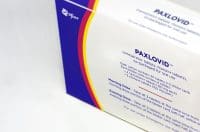In the post-pandemic era of healthcare, many hospitals stand at a crossroads. Nursing units—the heart of patient care—are experiencing an existential crisis, and many hospitals grapple with pressing issues. Research indicates that patient fall rates are higher than acceptable, patient satisfaction scores are below targets, and staff turnover rates continue to rise. These issues are symptoms of a deeper root cause of a problem—the overextension of charge nurse roles. Tasked with managing patient caseloads while overseeing other nurses, these vital staff members are spread too thin, which leads to compromised patient care and a decline in staff morale. Traditionally rotated among staff, charge nurses find it increasingly challenging to balance patient care with their supervisory duties.
This strain on charge nurses is evident in several nursing sensitive indicators and hospital metrics, calling for a transformative approach to redefine the traditional role of these key nursing leaders. According to the American Nurses Association, the primary role of a charge nurse is to ensure that all nursing functions within the department run smoothly and efficiently while providing guidance and support to help staff through challenging situations as they arise. However, performing this role can prove difficult because charge nurses frequently have heavy patient loads and high acuity.
Hospitals must address this imbalance to safeguard patient safety and enhance operational efficiency. Hospital leaders need to recognize this call for change. The charge nurse position must be re-envisioned, shifting from a dual-focus role to one centered on leadership and unit management. This strategic move aims to enhance nurse retention, bolster teamwork, improve patient safety, and raise the overall quality of care.
Change is always challenging, especially in a complex environment like healthcare. However, a pressing need exists to redefine the charge nurse role to focus on unit shift management, peer leadership, and mentorship. Freed from direct patient care responsibilities, charge nurses can concentrate on guiding the nursing staff, managing daily operations, and ensuring the delivery of high-quality patient care. This paradigm shift would help to create a more collaborative, efficient, and patient-centered environment.
Successful transformation requires multistakeholder buy-in. Nursing executives, hospital leaders, nurse educators, nurse managers, and staff nurses must all work together to support the redefined charge nurse role. This change will require a comprehensive training program, clear objectives, and frequent check-ins with the charge nurse to ensure their success. Collaborative efforts are instrumental in steering the change process in the right direction.
At an organizational level, several key metrics must be employed to assess the effectiveness of the new charge nurse model. These include benchmarks on patient fall rates, patient satisfaction scores, nurse turnover rates, and staff perceptions of teamwork. Diligent data collection and analysis will help gauge the new model’s impact on hospital performance. These metrics will provide valuable insights, help fine-tune the model, and ensure alignment with the organization’s goals.
The redefined charge nurse role will bring a more balanced, efficient, and patient-focused approach to nursing management. This transformation will enhance patient care outcomes, improve nurse morale, and reduce turnover rates. It sets a new standard in nursing leadership and demonstrates the power of strategic change in healthcare in the midst of post-pandemic challenges.
References
American Nurses Association. Charge nurse vs. nurse manager: What’s the difference? May 19, 2023. nursingworld.org/resources/individual/charge-nurse-vs-nurse-manager/#:~:text=The%20primary%20role%20of%20a,nurses%20are%20generally%20patient%2Dfacing
Elliott MN, Beckett MK, Cohea CW, et al. Changes in patient experiences of hospital care during the COVID-19 pandemic. JAMA Health Forum. 2023;4(8)e232766. doi:10.1001/jamahealthforum.2023.2766
LeLaurin JH, Shorr RI. Preventing falls in hospitalized patients: State of the science. Clin Geriatr Med.2019;35(2):273-83. doi:10.1016/j.cger.2019.01.007
NSI Nursing Solutions. 2023 NSI national health care retention & RN staffing report. 2023. nsinursingsolutions.com/Documents/Library/NSI_National_Health_Care_Retention_Report.pdf


















